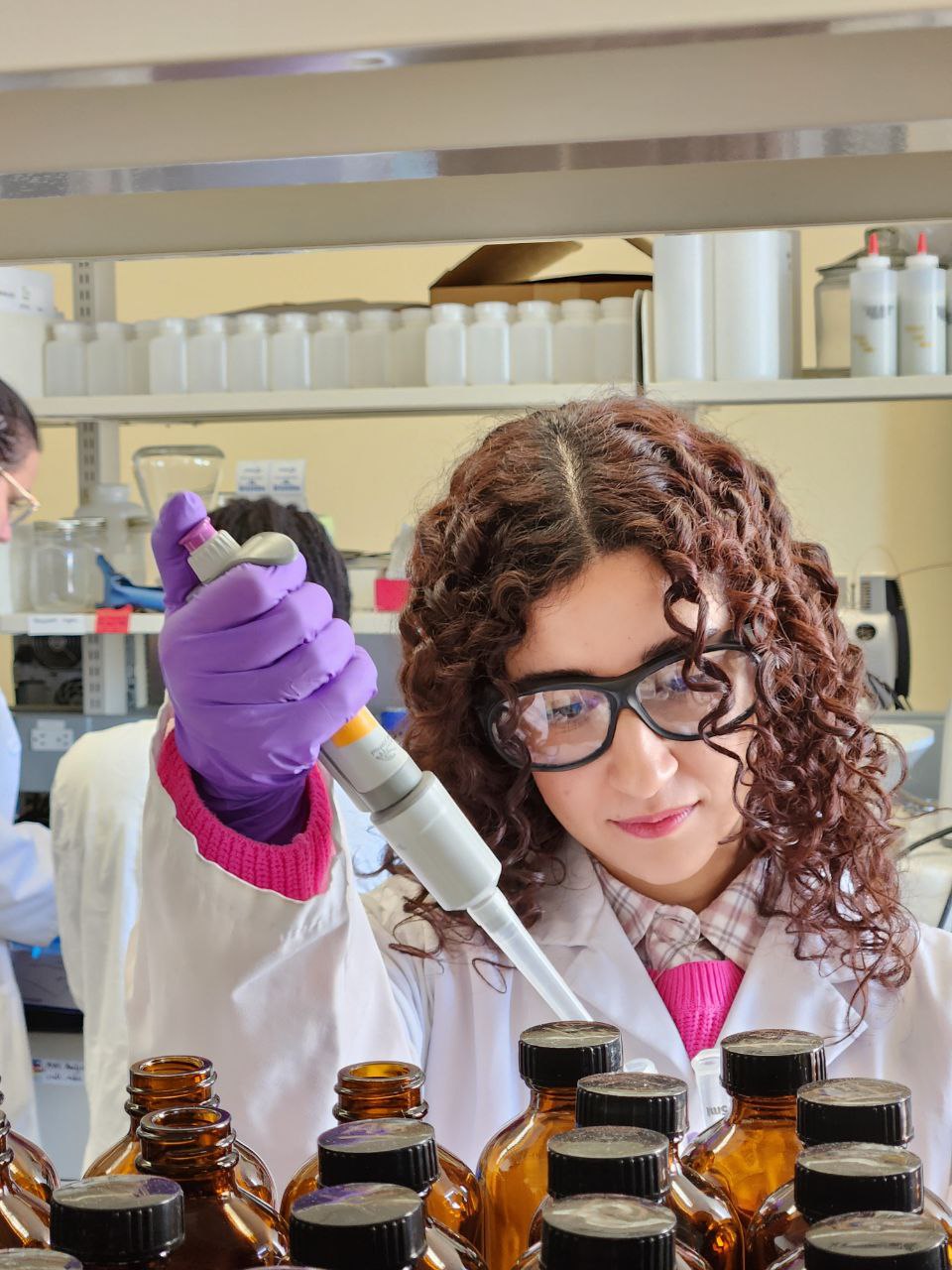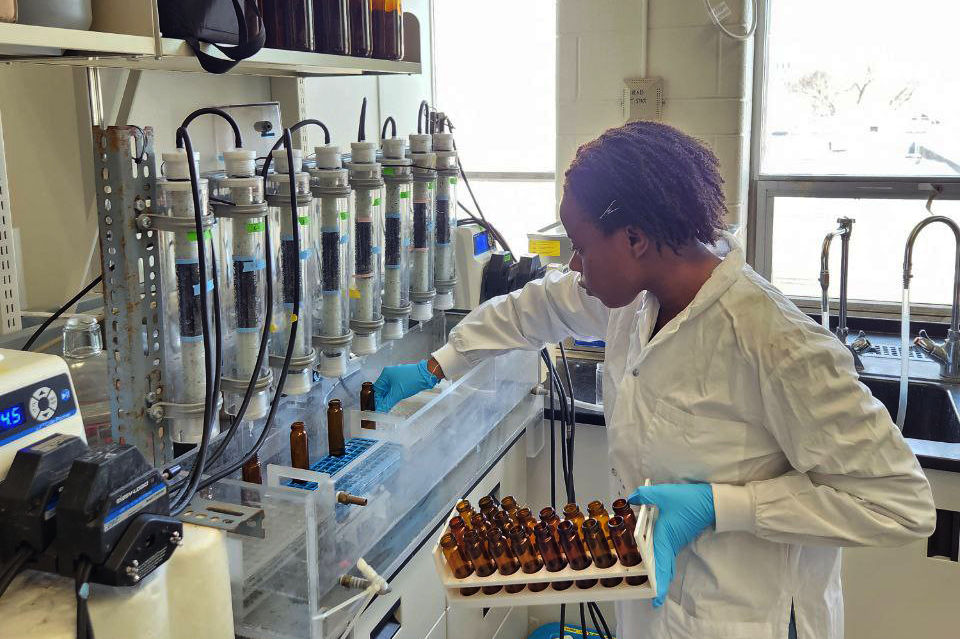
Water treatment plants are on guard of the safety and cleanness of the water we use daily. However, the CivMin’s Drinking Water Lab is essential in addressing the many challenges they face. We chatted with two graduate students working under the supervision of Professor Ron Hofmann, a member of the University of Toronto’s Drinking Water Research Group, to learn more about their current research.

Mennatallah Alnahas, CivE PhD Candidate
Cyanobacteria, commonly known as harmful algae blooms, grow on the top of the water’s surface in hot climates. As a result of climate change, we have observed an increase in algae growth in regions such as Canada, which are not typically hot. Water treatment plants face an issue, where the blooms end up in their water intake. Some of these blooms can be toxic as they release toxins into the water. Consequently, algae blooms can create a big issue for water treatment plants, as they are not equipped with the appropriate treatment processes to either remove the cells or degrade the toxins.
My research is focused on monitoring these cyanobacteria relying on phycocyanin fluorescence which is a unique pigment to these harmful algae, and then using machine learning to predict the upcoming blooms, so the utilities can be alarmed to put emergency plans in action.
Maeva Che, PhD Candidate

My research focuses on removing taste and odour compounds from drinking water, primarily using granular activated carbon (GAC) filtration.
The method I’m focusing on is commonly used in water treatment plants, it involves using granular activated carbon (GAC), which is derived from organic materials such as wood, coal, or coconut shells. The taste and odour compounds are removed from the water when they adhere to the adsorptive surfaces of activated carbon through adsorption. However, the adsorption capacity of GAC filtration decreases over time as the carbon becomes exhausted, meaning there are no functional surfaces left to remove the contaminants.
To address this challenge, my work explores alternative mechanisms, particularly biodegradation. Beneficial microorganisms within operational GAC filters can biodegrade and remove taste and odour compounds from water. By combining adsorption and biodegradation, filter performance can be enhanced. However, predicting filter lifetime becomes challenging.
Therefore, my research is focused on exploring the methods to enhance biodegradation in GAC filters and accurately predict filter performance and lifetime when biological removal is the primary method of removing taste and odour compounds. This will reduce the need for frequent media replacement and lowering associated costs in water treatment utilities.
By Galina Nikitina